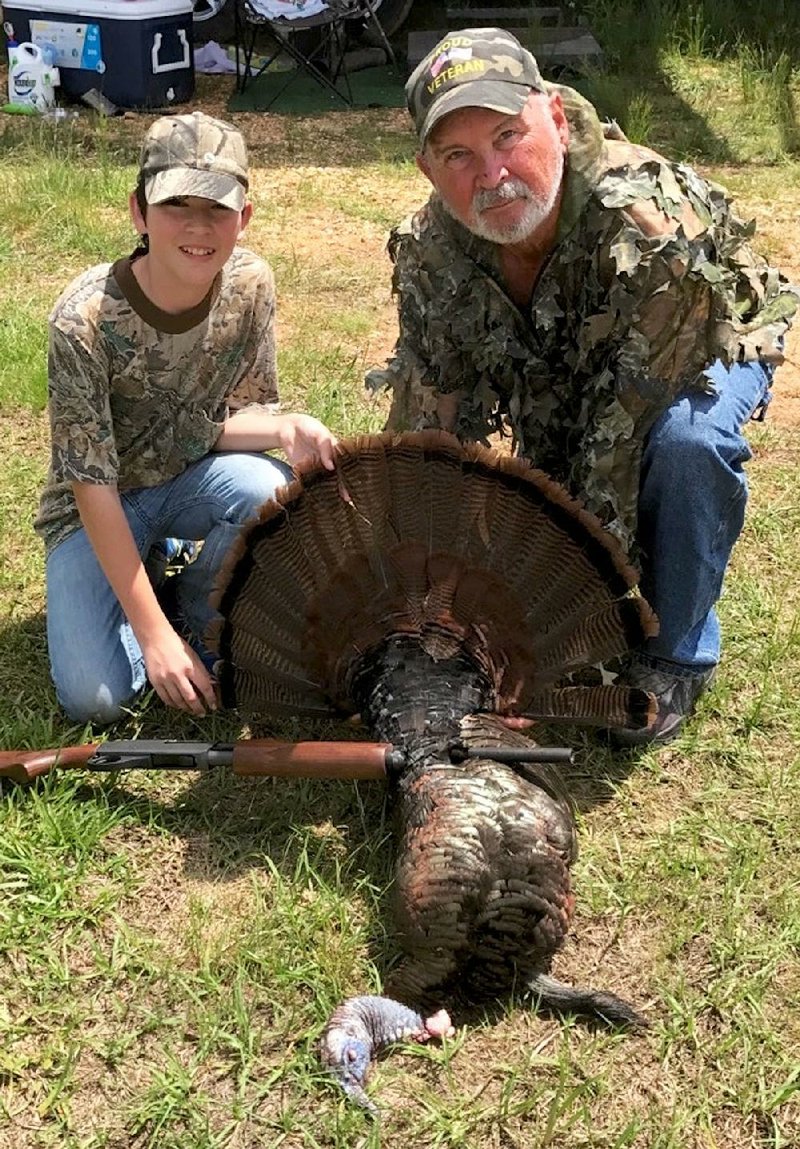TULL -- If you think you've read this story before, it's not a reprint.
Last week, the sights and sounds of a most remarkable turkey hunt that took place April 12 appeared on this page. It ended in storybook fashion shortly after it began with a mature gobbler in the bag.
That experience was so inspiring that I returned Thursday to the same spot for an encore. Unlike last time, there was no reluctance, confusion or indecision. I was excited to go, I went where I intended to go, and I arrived on time.
It was the same kind of morning, too -- clear, cool and calm -- the kind of morning when turkeys should gobble.
Unlike the last hunt, I left my turkey hen decoys in the bag. They almost cost me my gobbler on the first hunt. Not having them probably cost me a second gobbler Thursday.
I sat in the same spot and called with a Patrick Frachiseur mouth call and a slate call of unknown manufacture. I bought it in 2005 at a turkey hunting expo at the Arkansas State Fairgrounds, and it's one of my favorites. It has a glass top over rough slate. Upon the slate rests a breast feather from a Rio Grande gobbler. The top is mostly decorative, but a portion of the glass is textured as a striker surface. With the right striker -- and I went through many to find it -- the glass produces a high, clear tone.
In the bottom of the pot is a recess that contains a small slate disc. It produces a deeper, raspier tone that is perfect for clucking, cutting and purring. Again I used an Eddie Horton box call made of black walnut and bloodwood and a Furr box call made in Scranton constructed of walnut and maple.
I called up a hen at about 6:25 a.m. It was still fairly dark in the woods, and I was surprised to see a bird on the ground so early. She was probably tending a nest.
Just like last time, a bird gobbled from the direction of a logging site. I heard nothing in that area for several days after my successful hunt, so I guess it took awhile for a new gobbler to fill the void.
Looking into the same misty cathedral of light, I waited for a backlit gobbler to strut down the open lane. That's how it happened last week, and it was one of the most beautiful things I've ever seen. I desperately wanted to see it again, knowing how thin the odds are of striking oil twice in the same well.
This gobbler approached from a different direction and locked in about 200 yards to my right. He was coming fast, so I shifted positions to gain a better shooting angle.
The entire forest seemed to tremble from his thunderous gobbles. The first gobbler was a boomer. This one was a screamer, with a raspy, cutting tone.
He was out of sight when he made the turn for his final approach, but I knew exactly where he was. Clear of obstructions, his gobbles were deafening at 75 yards. I positioned my shotgun on my knee and waited for him to appear in an opening about 25 yards away. I saw the top of his back slinking through the grass. It would all be over in less than a minute.
And it was, but not in a good way.
Sensing movement to my left, I strained through the corner of my eye to see two real hens step out of a thicket. I clucked and purred in an attempt to lure the hens close, but it was no use. The hens went straight for the gobbler. I did not see any of them again, but I heard gobbles for the next hour.
A hunter has three options in that situation. If you can determine where the birds are going, you can try to circle them and get into an ambush position. That's hard to do in my woods because there is so much dry wood litter on the ground. You have to move slowly to keep from making too much noise.
Or, you can wait. Hens will eventually leave a gobbler to return to their nests. When they do, he'll often respond to calls between 11 a.m.-1 p.m.
That did not happen, but three more birds appeared about 100 yards away at 10 a.m. One was a good gobbler, and one was a hen. I didn't get a good look at the third bird.
They acknowledged my calls, but they seemed to have a destination in mind. They did not change course, so I made fighting purrs with a pair of small hand calls designed for that purpose. Rev. Mike Stanley of Highland says that the fighting purr is probably his most effective call. Reluctant gobblers in north Arkansas can't resist it, Stanley said, and in the 10 years I've known him, it seems like it's helped put at least one bird on the ground annually.
One bird gobbled loudly at the fighting purr, but they wouldn't turn. I figured rightly that the hen was the problem.
"My fighting purr usually works best on a gobbler, or gobblers without hens," Stanley said in a text message.
At about 11 a.m., the hen I saw at daybreak returned going the other direction.
The third option is to leave the woods without spooking birds and come back later. At 1 p.m., that was the best choice.
I worked one bird and got another one to gobble. That's a good morning anywhere, but especially in Arkansas.
Besides, I learned a couple of things that might produce a better outcome next time.
Sports on 04/23/2017

